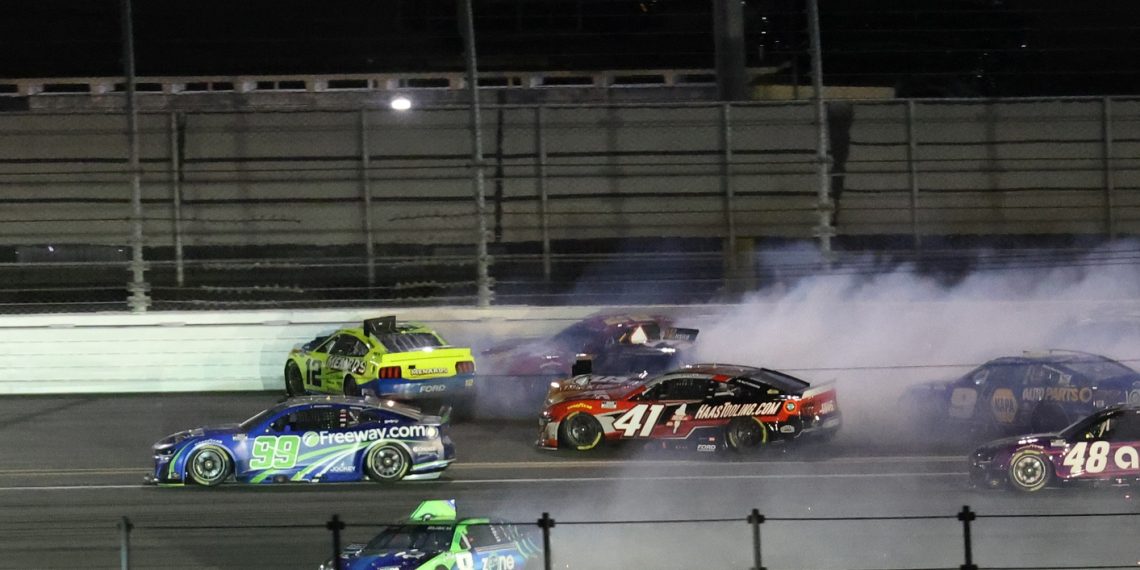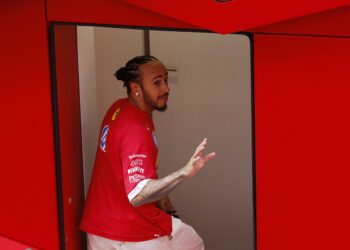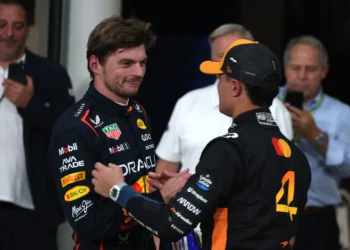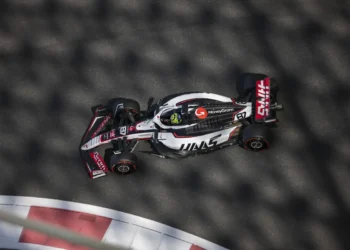With just 15 laps to go, Joey Logano was in prime position to fight for his second Daytona 500 victory. He had already won Stage 1, led 43 laps, and had one of the fastest cars on the track. But instead of contending for the checkered flag, Logano found himself wrecked and finishing in a dismal 35th place—his race undone by a chain reaction sparked by Ricky Stenhouse Jr.’s late block.
Was Logano a victim of bad timing? Or did his own aggressive racing style play a role in his downfall? NASCAR veterans are now split on the blame game, with some saying Stenhouse Jr. triggered the wreck, while others believe Logano’s decision-making sealed his fate.
Logano’s Risky Move—Was It Avoidable?
It all started when Ricky Stenhouse Jr. threw a last-minute block on Logano while defending his position. Freddie Kraft, a respected NASCAR insider, explained the move:
“I think Ricky makes a bad block—a late block. I don’t even know if it’s a bad block, but he gets the block done. It’s a block, it’s late, it’s going to stack everybody up, but he gets it done. And then Joey, there’s a half, three-quarters of a car hole there, and he just keeps trying to wedge back in there.”
Stenhouse’s block compressed the field, creating a scenario where Logano had nowhere to go. Behind him, Noah Gragson’s No. 4 car was running dangerously close. If Logano braked too hard, Gragson could have rear-ended him, triggering another crash. If he forced his way into a closing gap, chaos was inevitable.
For Logano, slowing down wasn’t an option, but trying to fit into a nearly impossible space proved to be the fatal mistake.
Logano Blames the 47, But Was He Right?
Logano didn’t hesitate to point fingers at Stenhouse Jr. after the race:
“47 had a bit of an indecisive moment, and that’s what gets you in trouble at times. I went to the second lane. It felt like I had to get in front of the 47 there. I had to get to the second car in my row to have a chance to win the race.”
In other words, Logano felt he had no choice but to go for it. But Jordan Bianchi, a NASCAR veteran, saw it differently, saying:
“The thing with Logano, and it has bit him a few times: He is very aggressive. Overly so sometimes, where he is a very aggressive pusher.”
While Logano insists Stenhouse Jr. created the problem, some argue that Logano didn’t have to force the issue. If he had backed out of the move, Team Penske still had a shot at victory with Ryan Blaney or Austin Cindric. Instead, Penske’s best chances were wiped out in a wreck that also took out Kyle Busch and Chase Elliott.
Kyle Busch’s Take: Did Team Penske Sabotage Itself?
Kyle Busch, one of the victims of the crash, wasn’t pleased with how things played out.
“In the end, it seems like Penske drivers shot themselves in the foot.”
It’s a hard pill to swallow for Team Penske. With Blaney and Cindric also in contention, Logano’s aggressive move might have taken out his own teammates’ best chance to win.
Instead of a Penske driver in Victory Lane, Hendrick Motorsports celebrated another Daytona 500 win.
The Verdict: Logano’s Aggression or Just Daytona Chaos?
At superspeedways like Daytona, aggressive moves are a necessary evil—but only when they work. In this case, Logano took a gamble and lost. While Stenhouse Jr.’s block contributed to the crash, Logano’s decision to force his way into a disappearing gap sealed his fate.
NASCAR thrives on these high-risk, high-reward moments. But when aggression backfires, it can cost a driver—and his entire team—a shot at glory.
The big question remains: Did Logano make the right call, or was this another case of his aggressive style backfiring?










